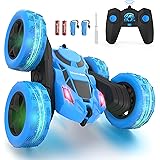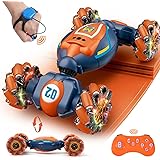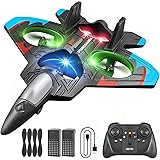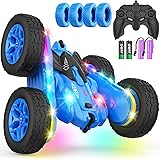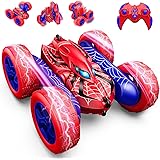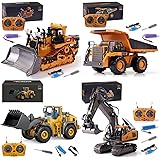Ever found yourself scrolling through YouTube, admiring those incredible FPV (First Person View) drone flights, and thinking, “I wish I could build one of those?” Then, perhaps, you ventured into a quick Google search for “DIY drone” only to be met with a chaotic image of wires, circuits, and what looks like an impossible puzzle. It’s a common initial reaction, almost like staring at a plate of spaghetti and being told it’s a map to buried treasure. The good news, as we just saw in the video above, is that building your own FPV quadcopter isn’t nearly as intimidating as it first appears. In reality, it’s about understanding a handful of essential components and how they all connect to bring your drone to life.
This guide will expand on the foundational concepts introduced in the video, diving a little deeper into the ‘why’ behind each part and giving you a clearer roadmap for your journey into building an FPV quadcopter. We’ll explore the critical components that make these agile machines soar, from the powerful motors to the intelligent flight controller, demystifying the process one piece at a time.
Understanding the Core Propulsion: Brushless Motors and Electronic Speed Controllers (ESCs)
Every FPV quadcopter relies on its motors to generate the lift needed for flight. Unlike brushed motors found in simpler toys, FPV drones use brushless motors. These motors are favored for their higher efficiency, durability, and power-to-weight ratio, making them perfect for the demanding performance of a racing or freestyle drone. Imagine if your car engine was incredibly powerful yet feather-light; that’s the advantage brushless motors bring to drone building.
However, a motor alone won’t spin. It needs an Electronic Speed Controller, or ESC. As the name implies, an ESC precisely regulates the speed and direction of its connected brushless motor. Each motor on your quadcopter will have its own dedicated ESC. These compact devices translate signals from the flight controller into the precise electrical pulses needed to make the motor spin at varying speeds, allowing your drone to accelerate, brake, or even reverse propeller rotation for advanced maneuvers. Modern ESCs are incredibly sophisticated, processing thousands of commands per second to ensure smooth, responsive flight.
The Backbone: Crafting the FPV Quadcopter Frame
Just like the skeleton supports a body, the frame is the structural foundation of your FPV quadcopter. Every other component, from motors to the flight controller, mounts securely onto it. While frames can be made from various materials, carbon fiber has become the industry standard, and for excellent reasons. It’s an exceptionally lightweight material, which directly contributes to longer flight times and increased agility – imagine trying to run a race wearing heavy boots versus light sneakers. Furthermore, carbon fiber boasts incredible strength and rigidity, providing vital protection to your expensive electronics during inevitable crashes. A strong frame can mean the difference between shaking off a minor bump and needing to replace half your components.
Frames come in various shapes and sizes, often designated by their motor-to-motor diagonal distance in millimeters (e.g., 210mm, 5-inch). Common configurations include X-frames for balanced flight characteristics, H-frames for a more stable platform often used for filming, and ‘deadcat’ frames that keep propellers out of view for cinematic shots. The choice of frame significantly influences the drone’s flight characteristics and its ultimate purpose, whether it’s for high-speed racing or smooth aerial videography.
Powering Your Flight: LiPo Batteries and the Power Distribution Board (PDB)
The heart of any FPV quadcopter’s electrical system is its battery, and for serious drone enthusiasts, that almost exclusively means a Lithium Polymer (LiPo) battery. LiPo batteries are renowned for their high energy density, meaning they pack a lot of power into a small, lightweight package. This characteristic is crucial for drones, where every gram impacts performance and flight duration. Common LiPo voltages for medium-sized drones include 11.1 volts (3S) or 14.8 volts (4S), with ‘S’ indicating the number of cells in series. The yellow XT60 connector mentioned in the video is indeed the de facto standard for connecting these powerful batteries to hobby-grade FPV drones, ensuring a secure and efficient power transfer.
Once connected, the Power Distribution Board (PDB) takes center stage. This component acts as the central hub for electrical power, channeling the high voltage from the LiPo battery to all the other components. Beyond simply distributing power, many PDBs also incorporate voltage regulators. These regulators are vital because while your battery might supply 14.8 volts, many sensitive components, like the flight controller, only require 5 volts. Trying to power a 5V component directly with a 14.8V battery would be like plugging a smartphone directly into a wall socket without a charger – an instant recipe for destruction! Some PDBs also offer a 12-volt output for other accessories that might need higher power than 5V. This intelligent power management ensures every component receives the precise voltage it needs to operate safely and efficiently.
Seeing is Believing: FPV Camera and Video Transmitter (VTX)
One of the most thrilling aspects of flying an FPV quadcopter is the immersive, first-person experience. This is made possible by the camera and video transmitter (VTX) working in tandem. The FPV camera, often tiny and robust, captures the drone’s view, allowing you to navigate as if you were sitting in the cockpit. This live video feed is then sent to the VTX, a small radio transmitter that converts the video signal into radio waves and broadcasts them wirelessly.
These radio waves are then picked up by FPV goggles or a monitor worn by the pilot, creating that unparalleled sense of flight. The video signal typically travels from the camera’s signal wire (often yellow) to the VTX, along with positive and negative power wires, which usually draw 5 volts directly from the PDB. The seamless, low-latency transmission of this video feed is paramount for responsive and enjoyable FPV flying, especially in high-speed racing or intricate freestyle maneuvers.
The Brain of the Beast: The Flight Controller (FC)
If the motors are the muscles and the battery is the heart, then the flight controller (FC) is undeniably the brain of your FPV quadcopter. This sophisticated piece of electronics processes all the inputs and continuously makes adjustments to keep the drone in the air and stable. The FC is packed with sensors, primarily accelerometers and gyroscopes, which constantly monitor the drone’s orientation, tilt, and rotation thousands of times per second. It takes this raw sensor data, combines it with your commands from the remote control, and runs complex flight algorithms.
Based on these calculations, the flight controller sends precise commands to each individual ESC, telling each motor exactly how fast to spin. Imagine trying to balance a tray on your fingertip; your brain constantly makes tiny, rapid adjustments. That’s essentially what the FC does for the drone, ensuring stability and executing your desired movements flawlessly. The FC itself typically requires a stable 5-volt power supply, which it receives from the regulated output of the PDB, protecting its sensitive circuitry.
Your Hands-On Control: Receiver (RX) and Transmitter (TX)
All those incredible maneuvers an FPV drone performs ultimately originate from the pilot’s hands on a remote control, known as the transmitter (TX). This device broadcasts control signals wirelessly to a receiver (RX) mounted on the quadcopter. The receiver’s antenna, often a small wire or two, picks up these signals, which are then passed on to the flight controller via a dedicated signal cable. Much like the VTX, the receiver also needs power, usually a 5-volt supply from the PDB or FC.
When you move a stick on your transmitter—say, pushing it forward to make the drone fly forward—that input is immediately encoded and sent to the receiver. The receiver relays this information to the flight controller. The FC then interprets this “fly forward” command and, as the video explained, instructs the rear motors to spin faster. This causes the drone to tilt forward, generating thrust in that direction. This real-time, precise communication link between your hands and the drone’s brain is what gives you total command over your FPV quadcopter.
Lift-Off! The Mighty Propellers
Finally, the components that directly generate thrust are the propellers. Each brushless motor on an FPV quadcopter has a propeller attached, and their design is crucial for efficient flight. Propellers convert the rotational energy of the motors into vertical thrust, pushing air downwards to lift the drone. The video highlights a vital piece of drone theory: propeller rotation direction. You might notice that two propellers spin clockwise and the other two spin counter-clockwise, creating a specific pattern across the quad. This isn’t random; it’s a clever engineering solution to counteract torque.
If all propellers were to spin in the same direction, the drone itself would constantly want to rotate in the opposite direction due to the torque generated by the motors. By having opposing pairs, the torques cancel each other out, ensuring the drone remains stable and doesn’t uncontrollably spin on its axis. Different propeller sizes and pitches (the angle of the blades) offer varying flight characteristics, with some optimized for speed and others for lift or efficiency.
Connecting It All: The Art of Soldering and Wiring
As you’ve seen, connecting all these components requires careful attention to detail. Wires run from the motors to the ESCs, from the ESCs to the PDB, and from the PDB to the flight controller, camera, and VTX. While the diagrams may simplify it, in practice, most of these connections are made permanent and reliable through soldering. Soldering involves melting a metallic alloy to create a durable electrical and mechanical bond between wires and connection points. It’s a fundamental skill for any DIY drone builder, ensuring stable connections that won’t vibrate loose during aggressive flight. Though it might seem complex initially, mastering soldering is a key step towards building your own robust and reliable FPV quadcopter, opening up a world of customization and repair possibilities.


